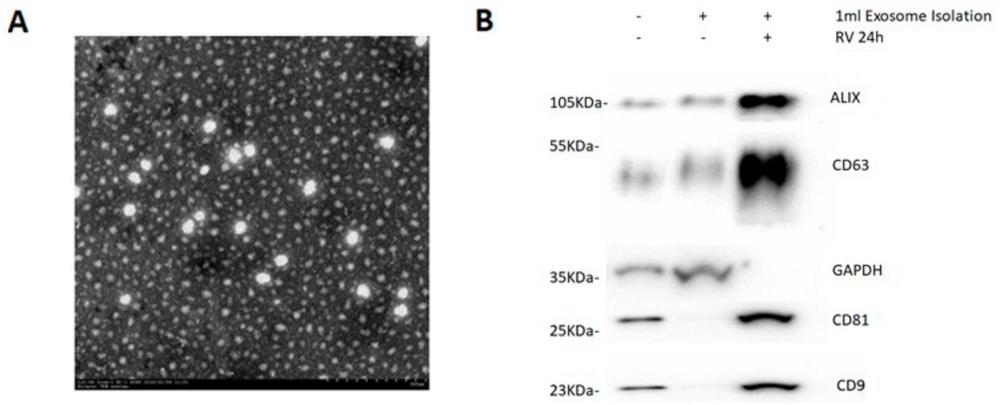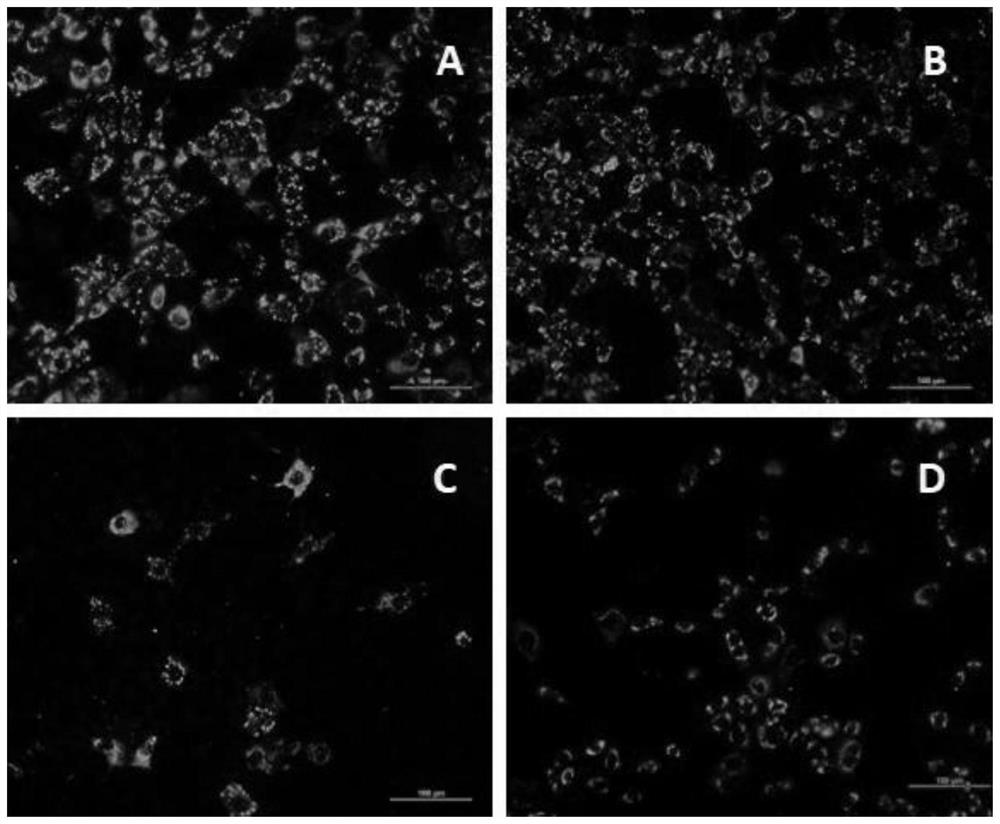Exosome containing miR-135b-5p and application of exosome in rotavirus infection resistance
A mir-135b-5p, rnamir-135b-5p technology, applied in rotavirus exosomes and its application fields, can solve problems to be studied and the like
- Summary
- Abstract
- Description
- Claims
- Application Information
AI Technical Summary
Problems solved by technology
Method used
Image
Examples
Embodiment 1
[0027] Example 1. Analysis of the biological properties of exosomes secreted by RV infection. After the wild-type rotavirus virulent strain ZTR-68 (G1[8] type) was infected with MA104 cells, the supernatant was collected and ultrafiltration centrifugation and Exosome isolation steps such as magnetic bead sorting are performed, hoping to isolate exosomes produced by rotavirus infection. Analyze the particle size of the exosomes collected by NTA to identify the particle size and concentration of the isolates; observe the size and shape of the isolates by electron microscopy; extract the protein of the exosome samples, and detect the exosome marker CD63 by WB , CD81, Alix and CD9 expression in the isolates.
[0028] The results of transmission electron microscopy of the isolate showed that the particle size of the isolate was about 140nm, with a membrane structure, which was consistent with the characteristics of exosomes ( figure 1 A). The purity and size of the isolate were a...
Embodiment 2
[0029] Example 2, the in vitro effect of exosomes in RV replication
[0030] After confirming that the isolates were RV-infected cells and the cells were able to release exosomes, the effect of exosomes on RV infection and replication was further analyzed. To analyze whether exosomes play a role in RV, we added exosomes and RV to MA104 cells at the same time. Rotavirus-specific immunofluorescence detection was performed 16 hours after the addition, and the results showed that, compared with the exosomes isolated from the control group, the protein expression of rotavirus was significantly decreased, suggesting that the exosomes isolated after RV infection may be It will prevent RV from entering the cell and inhibit the replication of rotavirus by directly binding to the virus or binding to the RV receptor on the cell ( image 3 C). Exosomes were added to MA104 cells after virus infection for 6 hours, and immunofluorescence detection was performed 16 hours after virus infecti...
Embodiment 3
[0033] Embodiment 3, step 1, cell culture
[0034] The cells used in this study were MA104 cells, and the culture conditions were MEM medium containing 8% newborn calf serum and 1% double antibody.
[0035] Step 2. Virus infection
[0036] (1) Take the RV virus liquid out of the -80°C refrigerator, place it at room temperature until the virus liquid is completely melted, add acetylated trypsin and calcium chloride, and bathe in 37°C water bath for 60 minutes to activate the virus;
[0037] (2) Gently wash the cell surface twice with serum-free cell culture medium, and then add the activated virus solution;
[0038](3) Place the cells inoculated with the virus solution on a shaker in a carbon dioxide incubator at 37°C, and slowly shake for 1 hour to absorb. Then the virus liquid was discarded, replaced with serum-free cell culture medium (containing trypsin at a final concentration of 1 μg / mL), and placed in a 37°C carbon dioxide incubator to continue culturing.
[0039] Ste...
PUM
 Login to View More
Login to View More Abstract
Description
Claims
Application Information
 Login to View More
Login to View More - R&D
- Intellectual Property
- Life Sciences
- Materials
- Tech Scout
- Unparalleled Data Quality
- Higher Quality Content
- 60% Fewer Hallucinations
Browse by: Latest US Patents, China's latest patents, Technical Efficacy Thesaurus, Application Domain, Technology Topic, Popular Technical Reports.
© 2025 PatSnap. All rights reserved.Legal|Privacy policy|Modern Slavery Act Transparency Statement|Sitemap|About US| Contact US: help@patsnap.com



